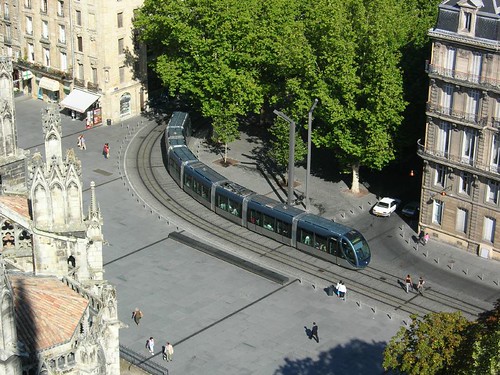Many have hoped that the technology would come to the United States and answer the call to get rid over overhead wires, specifically in the District of Columbia where an old law prohibits wires. It was specifically called for by Clay Chastain for Kansas City's system. However experts in the US have said that Alstom has no plans to bring the system to the United States. Part of the problem is the unknown effects of stray current coming from the third rail when the roads are salted during snow or ice storms.
How it works: Basically a third rail is laid between the two tracks and turns on when radioed by the vehicle. Two shoes, one on each end of the tram take up power as the electrified sections pass under. Sections only turn on when they are underneath the vehicle leaving pedestrians safe from being electrification.

 Flickr Photo Courtesy of Art in BX
Flickr Photo Courtesy of Art in BX Flickr Photo Courtesy of Dorsetbays
Flickr Photo Courtesy of DorsetbaysOutside of the historic downtown, the line in Bordeaux switches over to catenaries. Other cities are looking into using batteries and Stone Consulting that brought us the Kenosha Streetcar for $3 million per mile is also looking to use a ultra-capacitor for a heritage line in Savannah Georgia.
